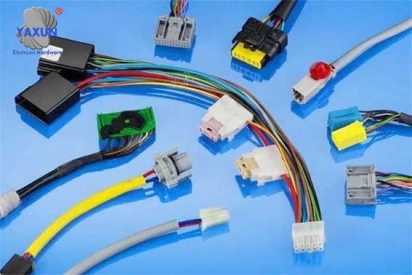1-Process content:
1. Mainly for the operation of sensor wiring harness and automobile wiring harness. The main wiring harness must not be cut or rewired.
2. When the wire harness is too short and needs to be rewired, do not cut the wire harness flush. The difference between the two wire harness connectors should be about 30mm. The conductor should not be broken during crimping, and the cross-section of the contact should meet the quality requirements. After wiring, wrap it with insulating tape. It is required that the insulating tape is completely wrapped, the thickness of the tape is appropriate, safe, reliable and beautiful.
3. When the connectors cannot be connected and the terminals need to be re-crimped, the terminals should be pressed against the conductor and insulation layer respectively. The conductor should not be broken by pressure, the insulation layer should not be pressed into the crimping part of the conductor, and the wire conductor should not interfere with the insertion after crimping. The cross-section of the terminal and wire crimping point using the crimping method should meet the quality requirements. The connection between the terminal and the wire should be firm and should not be damaged or detached under the specified pulling force. The tensile force value should be less than that specified in Appendix 1.
4. When wiring, the wire diameter and color of the selected wire and the connecting wire must be consistent. If agreement cannot be reached under special circumstances, ensure that the wiring in the same location on the same model of vehicle must be consistent.

Cutting and Wiring Standards for Connection Harnesses
2-Process parameters:
1. The difference between the wiring harness connectors is about 30mm.
2. The length of the branch line should not be less than 30mm.
3. The distance between contacts, contacts and branch points should not be less than 20mm.
4. When an insulating sleeve needs to be installed at the connection between the wire and the terminal, the length of the insulating sleeve shall not be less than 20mm.
3-Quality requirements:
1. The cross-section of the crimped joint between the terminal and the wire conductor and the crimped contact point shall meet the following requirements:
1. The cross-sections of all single wires in the conductor should be irregular polygons. There should be no obvious gaps between conductors and terminals and between single wires. The terminal crimping area should cover all conductors. The crimped parts a and b of the terminal crimp must be connected and symmetrical.
2. The distance d between the crimped portion a and b of the terminal and the bottom shall not be less than 1/2 of the nominal diameter of the single wire.
3. The burr height e on both sides of the bottom of the cross section should not exceed the thickness g of the terminal after crimping, and the burr width f should not exceed 1/2 of g.
2. Any of the following defects are not allowed in the cross section of the crimped joint between the terminal and the wire conductor and the crimped contact point:
1. There is a gap between the crimped parts a and b of the terminal.
2. The end of terminal crimp a or b is connected to other parts of the terminal.
3. Cracks h appear in the crimping part of the terminal on the cross section.
3. It is required that the insulating tape must be completely wrapped and the thickness of the tape must be appropriate, safe, reliable and beautiful.
 English
English العربية
العربية Български
Български 中文(漢字)
中文(漢字) Čeština
Čeština Dansk
Dansk Eesti keel
Eesti keel Suomi
Suomi Français
Français Deutsch
Deutsch Ελληνικά
Ελληνικά עברית
עברית Magyar
Magyar Bahasa Indonesia
Bahasa Indonesia Italiano
Italiano 日本語
日本語 한국어
한국어 Latīna
Latīna Latviešu valoda
Latviešu valoda Lëtzebuergesch
Lëtzebuergesch Polski
Polski Português
Português Română
Română Русский
Русский Slovenščina
Slovenščina Español
Español Svenska
Svenska ภาษาไทย
ภาษาไทย Tiếng Việt
Tiếng Việt
